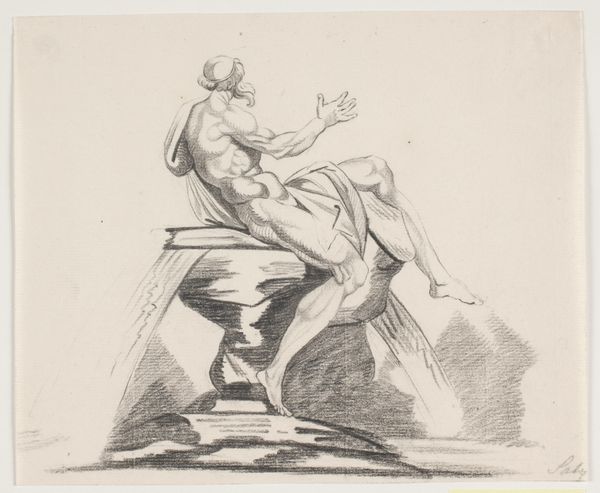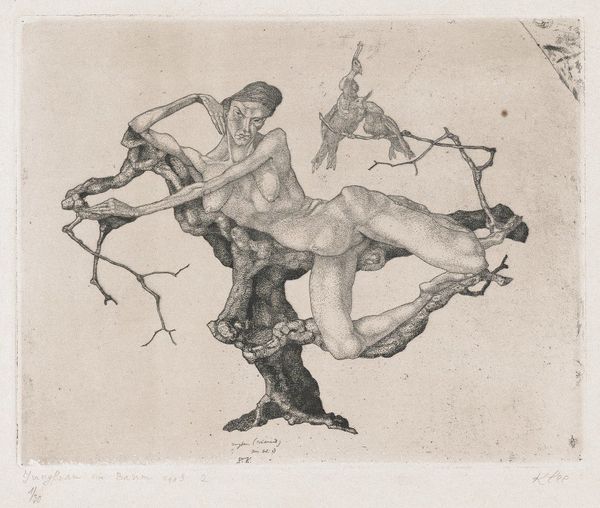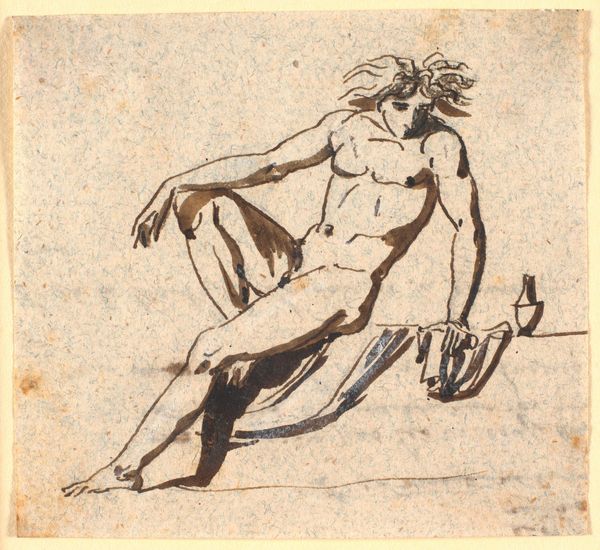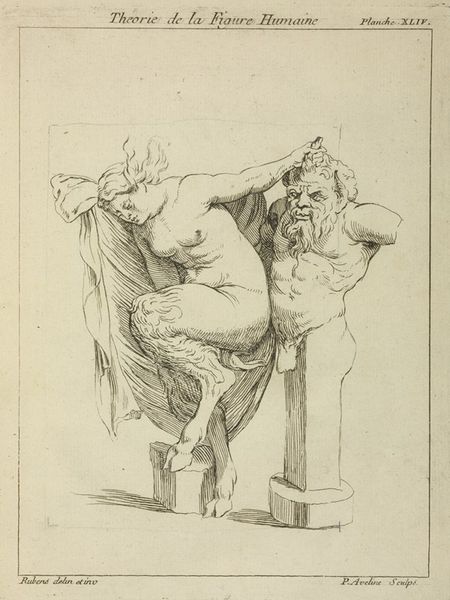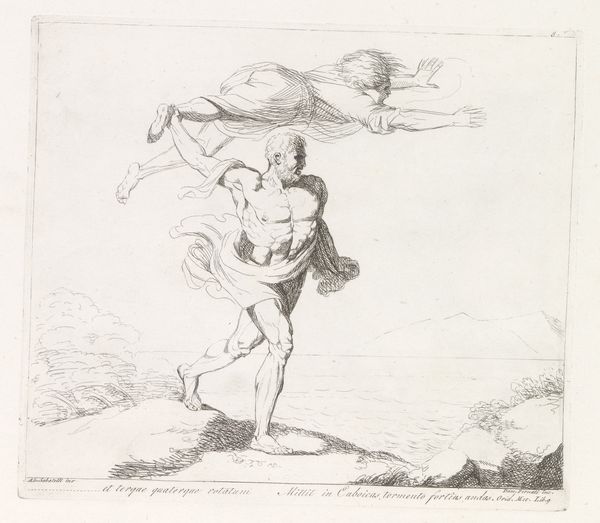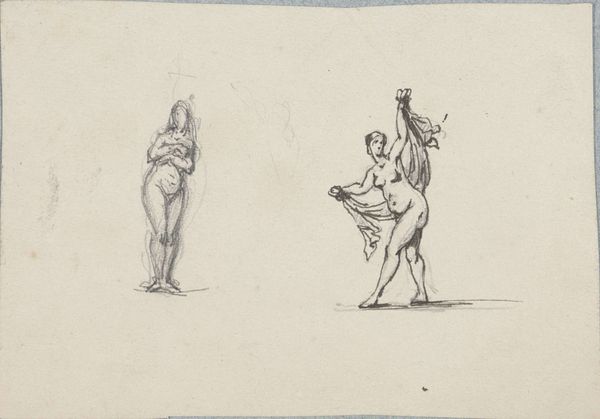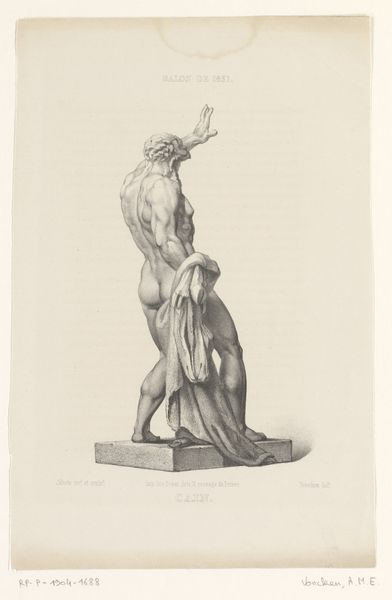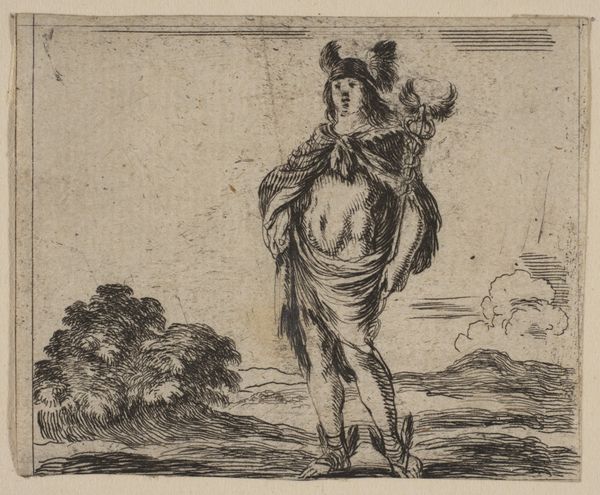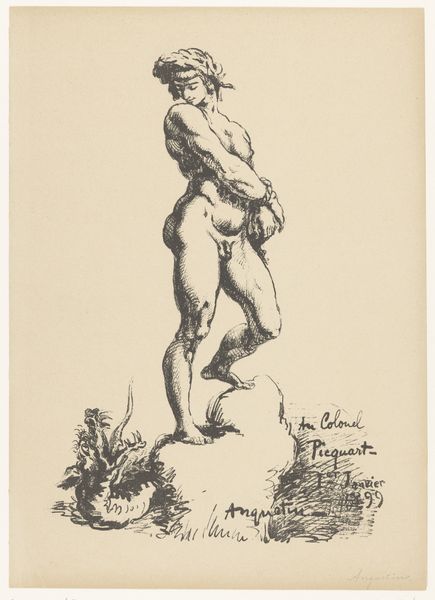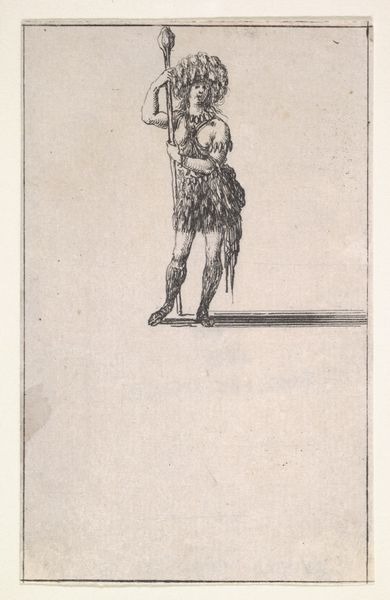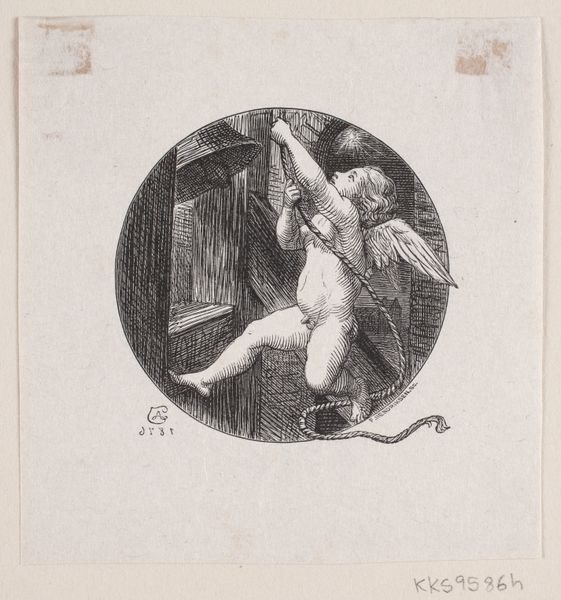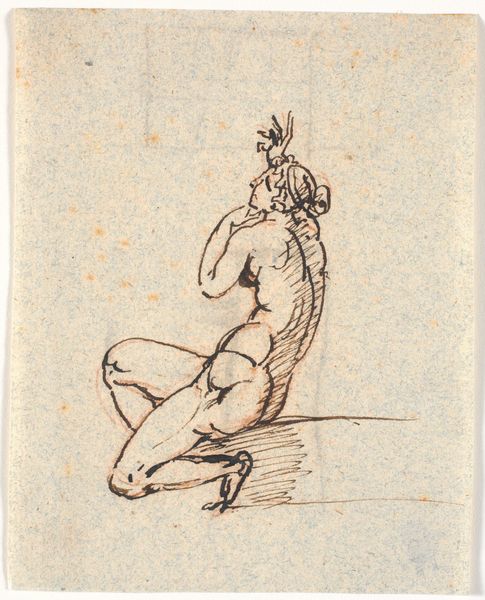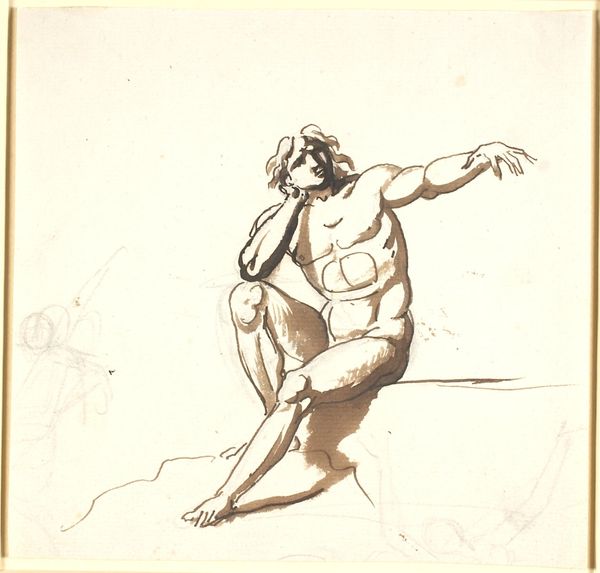
print, engraving
#
neoclacissism
#
allegory
# print
#
greek-and-roman-art
#
figuration
#
line
#
academic-art
#
engraving
Dimensions: 59 mm (height) x 80 mm (width) (bladmaal)
Curator: This is Frederik Ludvig Bradt's "Merkur," an engraving made sometime between 1747 and 1829, currently held at the SMK - Statens Museum for Kunst. Editor: It’s immediately striking, even in this small-scale print, how the linework animates Merkur, almost like he's about to leap right off the surface. Curator: Bradt’s Neoclassical and Academic training comes through strongly, wouldn't you agree? The engraving, which depicts Mercury, is a classical figure, complete with caduceus, winged sandals, and helmet. It leans heavily into allegory. Editor: Absolutely. The precision of the engraving captures a body idealized. Notice the play of light and shadow defining the musculature, contributing to the dynamic energy you mentioned. Also how the upward gaze creates an ascending vector through the figure's posture? Curator: Consider Mercury as more than simply the messenger god. In Bradt’s era, this figure becomes a conduit for understanding Enlightenment values. Here he is not merely a symbol of commerce or communication but a testament to human intellect reaching toward higher understanding. We see that in the figure holding an open letter in its hand. Editor: True, that simple letter transforms the entire piece. Beyond its surface representation, I'm seeing it become an integral element within this complex play of signs and significations. But how does it challenge us? Curator: Perhaps the somewhat rigid formalism keeps a critical dialogue at bay? This era had such narrow interpretations. Even while revolutionary ideas began circulating, strict rules remained. Still, prints like these were reproduced, disseminating ideas throughout society to wide audiences who didn't have direct access to art. Editor: You know, revisiting the interplay between form and allegory has given me fresh insights into how messages from this period get sent— both openly and coded. Curator: Indeed. Understanding the social function these artworks served really encourages consideration about who it represented at the time, but also who was excluded.
Comments
No comments
Be the first to comment and join the conversation on the ultimate creative platform.
